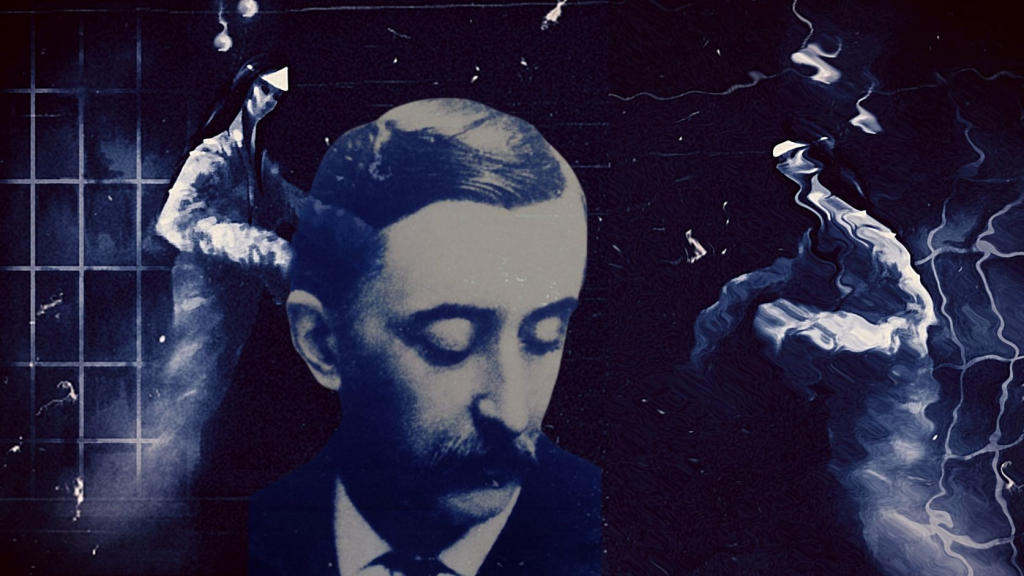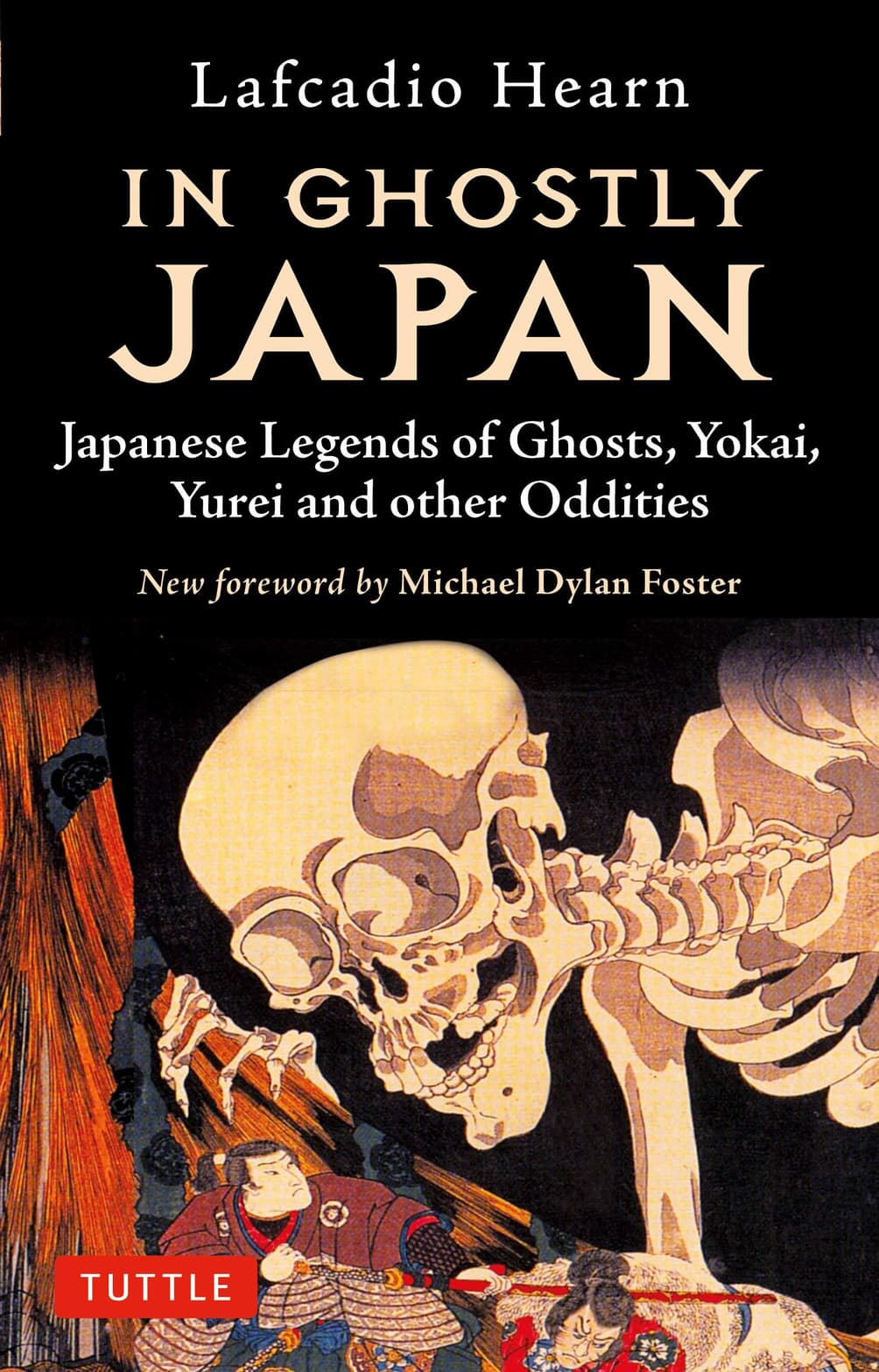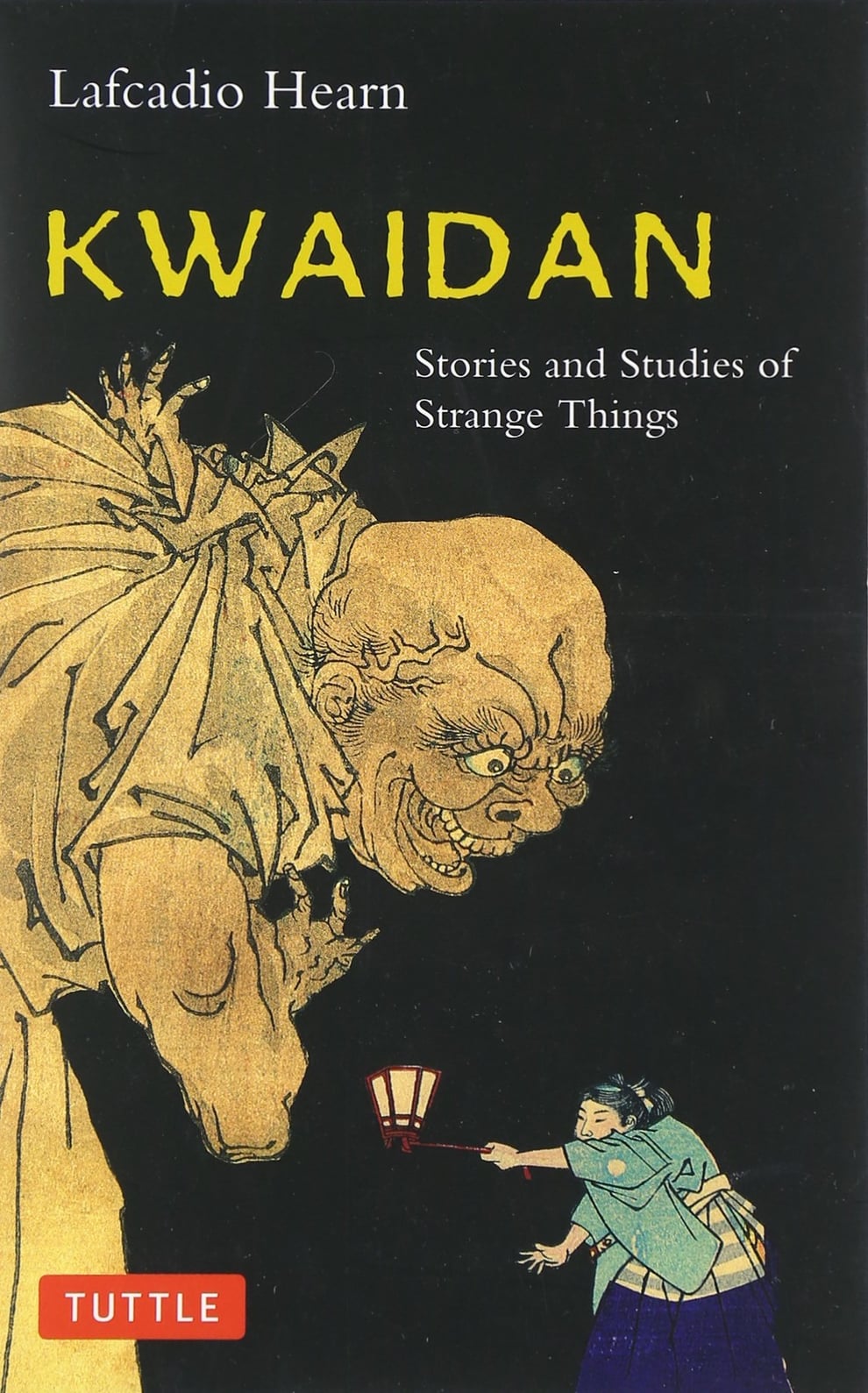It’s a curious fact that an orphaned 19th-century Britton of Greek-Irish heritage became one of Japan’s foremost supernaturalists. A quick glance at Lafcadio Hearn’s upbringing, however, and the gruesome dots begin to connect.
Born in 1850 on his namesake Greek island, Lefkada, Hearn’s family soon moved to Dublin where his mother and father separately abandoned him for far-off lands. This became the pattern of Hearn’s formative years: jettisoned by more relatives than the Baudelaire siblings, one of whom – a pious Irish aunt – treated his crippling fear of the dark by locking him in a windowless room come nightfall. Compiling his misfortunes, Hearn lost sight in one eye in a playground incident, and by the age of 20 had been rendered homeless in both London and Cincinnati.
Hearn didn’t arrive in Japan until 1890, by then an established 40-year-old journalist, having spent 20 years in the Americas. Yet his deep-seated connections with abandonment and failed relationships remained, only matched by his fascination with foreign cultures and an obsession with stories from beyond the grave. Legends of yokai (ghosts) permeated traditional Japanese folklore, fueling within Hearn a frenzy of supernatural creativity.
Armed with a seasoned writer’s prose, an aesthete’s eye and a very willing wife – who used to read him spooky tales under dim candlelight in the dead of night stoking the flames of his dark imagination – Hearn became the adopted father of the kaidan (ghost story), and the first foreigner to retell and reimagine these folktales for a Western audience. Of all the literary genres into which he dipped his pen, none have had a more lasting legacy.
Through Hearn’s two most significant horror story collections, In Ghostly Japan (1899) and Kwaidan (1904), we are given unique lenses into the mind of one of history’s most remarkable and troubled Japanophiles.
In Ghostly Japan (1899)
In Ghostly Japan was first published in 1899, fusing elements of onryo (vengeful spirits), Oriental mysticism and Buddhist teachings. While death, naturally, plays a central role in the book, the stories are equally important sources of cultural information providing unique insights into Japanese life in the pre-industrial era.
Furisode
On March 2, 1657, a rampaging conflagration spread across Edo (now Tokyo), burning 60-70% of the capital’s primarily wooden architecture and claiming an estimated 100,000 lives. Hearn was never afraid to portray historical events in a demonic light, and it’s to this great disaster he first turns his attention in In Ghostly Japan, with the tale “Furisode.”
It follows the itinerant journey of a cursed furisode (an Edo-period robe worn by unmarried noblewomen), which causes its wearers to succumb to untimely, grief-stricken deaths. A priest then seeks to exorcise the robe’s evil with fire. “But as the silk began to burn,” Hearn writes, “there suddenly appeared upon it dazzling characters of flame.” In superstitious circles, these calligraphic flames were believed to have started the “Furisode Fire” of 1657 – a nickname it still carries today.
A Story of Divination
Though it sounds J.K. Rowling-esque, “A Story of Divination” is more representative of pseudo-scientific Chinese philosophy than a world of witchcraft and wizardry. Hearn narrates in third-person the “true” tale of a samurai who succumbs to the changes to feudalism imposed by the Meiji government in the 1860s and turns to a life of nomadic fortune-telling.
“You may disbelieve in fortune-telling,– intellectually scorn it; but something of inherited superstitious tendency lurks within most of us,” Hearn challenges his readers; one of the countless examples he believed he was a propagator of mystic truths, rather than a writer of fantastical fiction.
Ululation
“Ululation” starts as the story of a howling dog which guards Hearn’s residence at night before morphing into a stream-of-consciousness meditation on the nature of being and our place in the cosmos.
“And unto whomsoever thinks about these matters, the story of a divine universe, made and ruled by paternal love, sounds less persuasive than the Polynesian tale that the souls of the dead are devoured by the gods,” he writes. Even when Hearn was pondering life’s great imponderables, the influence of the otherworldly was always within arm’s reach.
Kwaidan (1904)
Kwaidan was the last short story collection published during Hearn’s lifetime, and is arguably his horror opus. He characterized “kwaidan” as “stories and studies of strange things”; an epithet that functions as the book’s subtitle and a pithy synopsis of his 14-year life in Japan.
Kwaidan was Hearn’s “ghostly sketches” (as he often referred to them) at their most sophisticated: melding specters and spirits with the subtlety of Japanese aesthetics and the groundbreaking science of the Western world at the turn of the 20th century. The tales are also penned in direct and concise prose, shedding the purple language, which colored his earlier work.
Mujina
“Mujina” – an old word referring to Japanese badgers or raccoon dogs, and occasionally to shapeshifting ghosts – is short, sharp and spooky, typifying Kwaidan’s style. It takes place on a bank by the old Akasaka Road in Tokyo, where a merchant happens across a form of yokai recurring in Japanese folklore, the Noppera-bo (faceless ghost).
“Then that O-jochu [honorable damsel] turned round, and dropped her sleeve, and stroked her face with her hand;—and the man saw that she had no eyes or nose or mouth,” writes Hearn, conjuring up the kind of creepy surrealism we’d now associate with Studio Ghibli.
A Dead Secret
In “A Dead Secret” we see another theme recurring in Japanese horror stories and particularly in Hearn’s writings: a mother who dies, only to return in the form of an apparition. Hearn was said to be haunted for life by his mother’s abandonment, and much of his later work shows a futile longing she’d one day return.
The story also speaks of love affairs and hidden truths; factors which equally shadowed Hearn’s childhood. “The letter was burned,” he writes. “It was a love-letter written to O-Sono in the time of her studies at Kyoto. But the priest alone knew what was in it; and the secret died with him.”
The Story of Mimi-Nashi-Hoichi
Like all supernaturalists, Hearn believed entire places and regions were haunted, such as the Straits of Shimonoseki, where the old Heike clan’s ghosts were said to roam. The tale of the blind bard Hoichi takes place here, seven hundred years prior to Hearn’s arrival in Japan.
The titular bard is lured into playing his biwa for fallen Heike warriors in the temple cemetery each night, before some monastic meddling and sword-cleaving revenge earn a new nickname for the ill-fated protagonist: Mimi-nashi-Hoichi (“Hoichi the Earless”). It’s a classic tale of Japanese history colliding with myth, which is both Hearn and his Kwaidan in their elements.
For those wishing to learn more about Lafcadio Hearn and his contribution to Japan, a visit to the Lafcadio Hearn Memorial Museum in Shimane Prefecture is highly recommended. For further reading, we also recommend Donald Richie’s “Lafcadio Hearn’s Japan” and Paul Murray’s “A Fantastic Journey: the Life and Literature of Lafcadio Hearn.”











